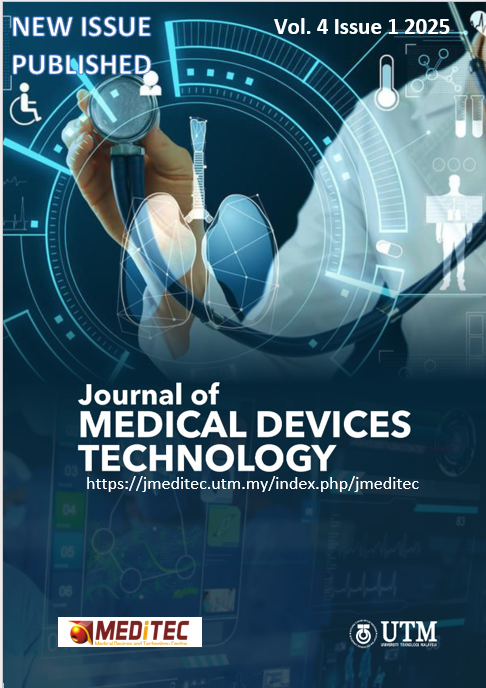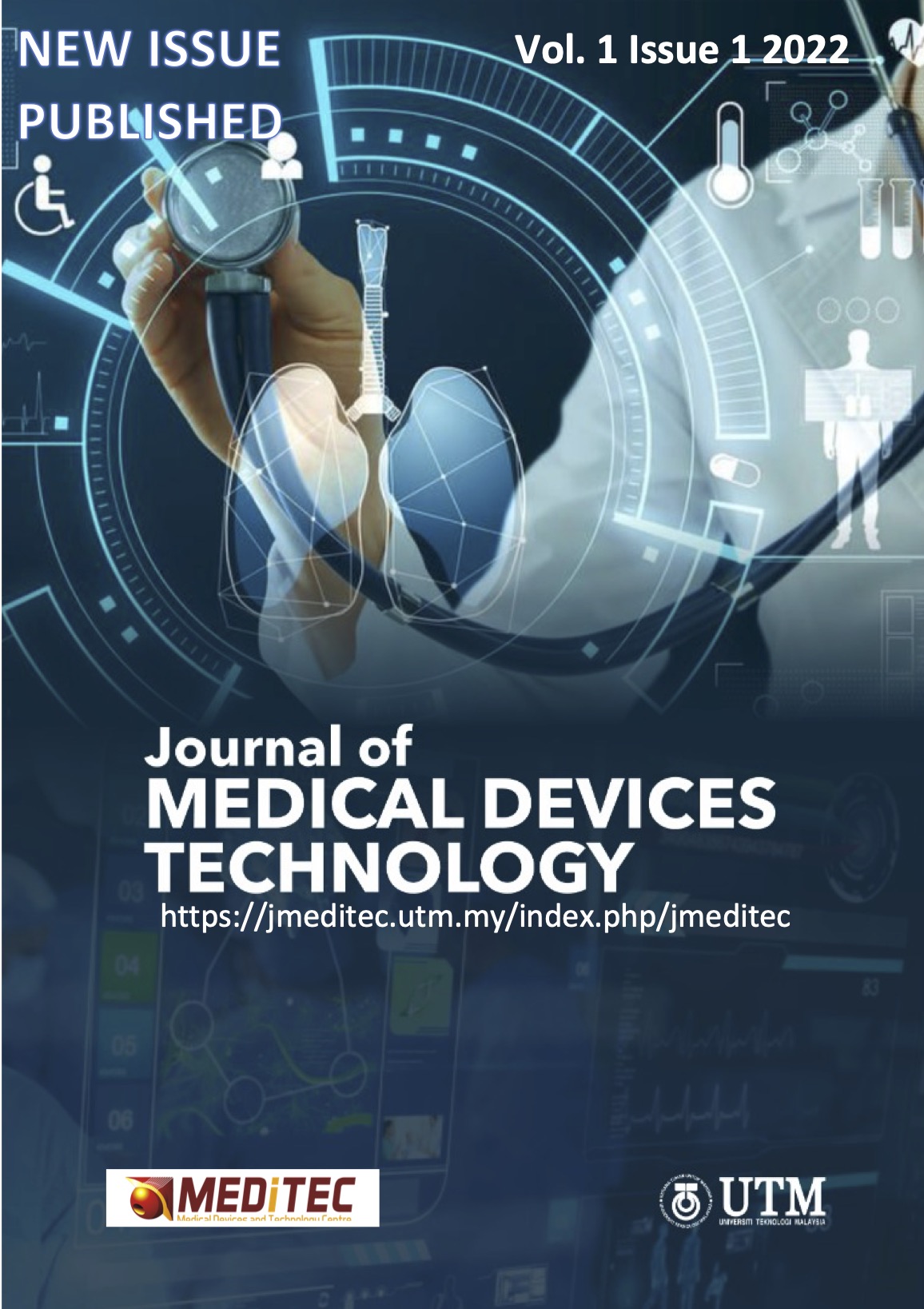Fabrication and Characterization of a PEGDMA-Conjugated Patch for Epicardial Cardiac Applications
DOI:
https://doi.org/10.11113/jmeditec.v4.71Keywords:
Conductivity, Epicardium, Nanostructures, Hydrogel, MyocardiumAbstract
This study aims to fabricate and characterize a conductive cardiac patch incorporating green-synthesized silver nanoparticles (Api-AgNPs) tailored for epicardial applications. The biosynthesis yielded uniformly dispersed nanostructures with favorable stability and functional surface chemistry. Characterization techniques, including Field Emission Scanning Electron Microscopy (FESEM), Dynamic Light Scattering (DLS), Fourier Transform Infrared Spectroscopy (FTIR), and zeta potential measurements, were used to confirm size distribution, surface functionality, and colloidal stability. FESEM analysis revealed predominantly spherical nanoparticles with an average size of 98.84 ± 43.98 nm based on manual measurements, while automated ImageJ analysis yielded a mean of 13.86 ± 9.13 nm after outlier correction. Upon incorporation into a PEGDMA hydrogel matrix, the particles maintained uniform dispersion and reduced apparent size (42–80 nm), indicating effective spatial separation. DLS analysis showed a hydrodynamic diameter of 113.73 ± 1.17 nm with a polydispersity index (PDI) of 0.40 ± 0.005, reflecting acceptable size uniformity. FTIR spectra confirmed key functional groups, hydroxyl (O–H), carbonyl (C=O), and aromatic (C–C), involved in nanoparticle stabilization and conductivity. A zeta potential of 40.9 ± 1.17 mV indicated strong colloidal stability. Electrical functionality was demonstrated by embedding the nanomaterial in a closed circuit, which successfully powered an LED. These findings underscore the potential of the Api-AgNP-integrated hydrogel as a conductive and biocompatible component in epicardial patches for myocardial repair, supporting the advancement of multifunctional cardiac tissue engineering strategies.

















